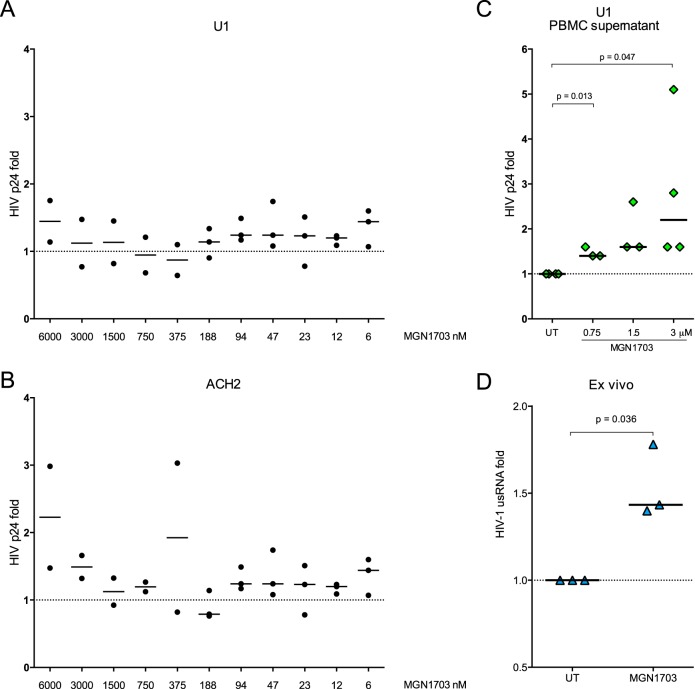FIG 5.
MGN1703 enhances HIV-1 transcription ex vivo. (A and B) ACH2 and U1 cells were stimulated with MGN1703 in 2-fold serial dilutions from 6 nM to 6 μM. HIV-1 p24 antigen (ELISA) was used as a measure of latency reversal. Direct MGN1703 exposure did not increase HIV-1 production in these latently infected cell models. (C) PBMCs from HIV-1-negative donors were stimulated for 48 h with MGN1703. Culture supernatants were then transferred to U1 cells and incubated for 36 h before the level of HIV-1 p24 antigen in the supernatant was quantified. In response to supernatants from MGN1703-stimulated PBMCs, U1 cells were shown to significantly increase median HIV-1 production up to 2.2-fold. (D) PBMCs from ART-suppressed HIV-1-infected donors were incubated for 16 h with MGN1703 (3 μM) or cRPMI as an untreated control, CD4+ T cells were then isolated by negative selection, and RNA was extracted. HIV-1 usRNA levels were measured by using seminested RT-qPCR. MGN1703 significantly enhanced the transcription of HIV-1 usRNA ex vivo by a median of 1.4-fold. Lines represent the median.

